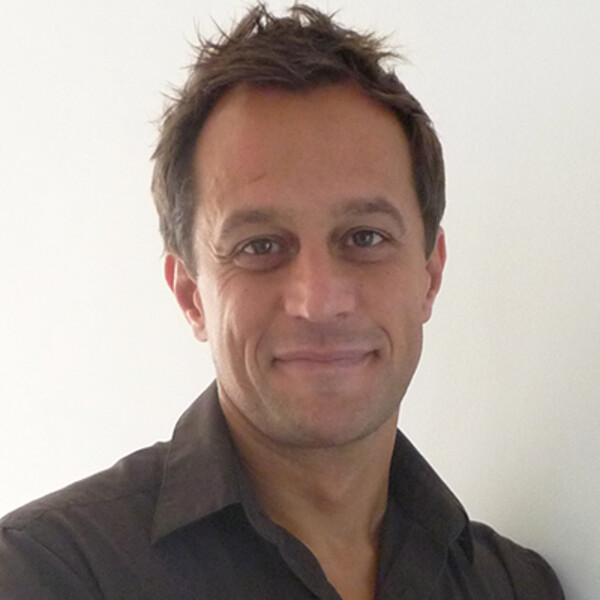Michael Reber
PhD

Michael Reber obtained his Ph.D. in Human Genetics from University Diderot, Paris (FR) and moved to The Salk Institute in San Diego, CA as a research associate to study neuroscience in Lemke's lab.
Since then, he has been focusing on the development of the visual system, particularly the formation of the network between the eye and the brain in normal and eye diseases conditions.
He obtained a position as a scientist/professor at the Institute for Health and Biomedical Research in Strasbourg, (FR).
In 2018, he joined the Donald K. Johnson Eye Institute at the Krembil Research Institute, University Health Network in Toronto to pursue his work on visual network formation and function.
Research Synopsis
My Lab
The lab, composed of 8 work benches and 8 desks in an open space layout is located at the Donald K Johnson Eye Institute at the 8th floor of the Krembil Research Institute.
We share lab and office space with Drs Wallace, Sivak and Monnier’s lab, creating a very active laboratory environment where there are many trainees and an active academic culture that fosters collaboration and training.
We have access to state-of-the-art facilities and equipment, from basic cellular and molecular biology to imaging (confocal, 2-photons, light sheet and time-lapse microscopy) as well as behavior (behavioral suite) and vision-specific devices (electroretinogram, pupillometer, ophthalmoscopy – optical coherence tomography).
My research
Brain function relies on the efficient processing of sensory information which requires formation and interaction of sensory maps in different areas.
Vision is the prevailing sense in several species including humans. Visual information is carried by the optic nerve to different brain structures, among them the superior colliculus (SC) involved in the control of visual attention.
The fundamental questions we address using state-of-the-art experimental and theoretical approaches are:
What are the mechanisms governing visual network formation in the SC?
We study the role and mechanism of action of different families of guidance cues involved in the control of visual maps formation in rodent models (1, 2, 3, 6, 7, 8).
We focus on two sorts of guidance cues, chemical - the Eph family of receptor tyrosine kinase and their membrane-bound ligands, the ephrins – and mechanical– the piezo mechanosensors.
We study how those two types of guidance control visual maps formation and how they interact using conditional knock-out/in animals.
We generate computational models to simulate these mapping processes.
How do neurodegenerative diseases impact the integrity of the network? Can we maintain the integrity of visual network?
Neurodegenerative eye diseases like glaucoma or age-related macular degeneration affect visual information processing.
We ask whether and how the visual system compensates for a loss of connectivity in animal models of neurodegenerative eye diseases.
We analyze visual networks and maps integrity and seek to identify the molecular mechanisms leading to compensation/adaptation. We also develop 3D-printed biomolecules (silk fibers) containing trophic factors and ask whether and how these biofunctionalized silk fibers support neuronal survival and regrowth.
What are the behavioral consequences of a defective wiring? Can visually-related behavior be restored in a disease context?
Defective visual maps in the SC lead to attentional deficits in animal models, consistent with the SC’s function in overt and covert attention.
In human, covert attention (attention in the peripheral visual field) can be improved through cognitive training. We ask whether manipulating/training the ability to detect new visual stimuli using virtual reality can improve behavioral responses in patients suffering from neurodegenerative eye diseases and brain injury.
We believe this integrated view of visual system development and function will provide answers as to how vision develops and works in normal and pathological contexts and what can be done to restore/preserve vision in neurodegenerative eye diseases or brain injury.
Recent Publications
Savier E and Reber M. (2018) Reconsidering the role of retinal Efnas in the development of midbrain visual maps. Front. Cel. Neurosci. 12, 77.
Savier E, Eglen S, Perraut M, Barthelemy A, Pfrieger FW, Lemke G and Reber M. (2017) A Molecular Mechanism for the Topographic Alignment of Convergent Neural Maps. eLife 6:e20470.
Hjorth JJ, Savier E, Sterratt DC, Reber M* and Eglen SJ*. (2015) Estimating the location and size of retinal injections from orthogonal images of an intact retina. BMC Neurosci. 16, 80 (*co-senior).
Mathis C, Savier E, Bott JB, Clesse D, Bevins N, Sage-Ciocca D, Geiger K, Gilet A, Laux-Biehlman A, Goumon Y, Lacaud A, Lelievre V, Kelche C, Cassel JC, Pfrieger FW and Reber M. (2015) Defective response inhibition and collicular noradrenaline enrichment in mice with duplicated retinotopic map in the superior colliculus. Brain Struct. Func. 220:1573-84.
Wittmer CR, Claudepierre T, Reber M, Wiedemann P, Garlick JA, Kaplan D and Egles C. (2011) Multifunctionalized electrospun silk fibers promote axon regeneration in central nervous system. Adv. Funct. Mater. 21, 4232-4242.
Bevins N, Lemke G and Reber M. (2011) Genetic dissection of ratiometric EphA receptor signaling in the formation of topographic neural maps. J. Neurosci. 31, 10302-10310.
Lemke G and Reber M. (2005) Retinocollicular mapping: new insights from molecular genetics. Ann. Rev. Cell Dev. Biol. 21, 551-580.
Reber M, Burrola P and Lemke G. (2004) A relative signaling model for the formation of a topographic map. Nature 431, 847-853.
